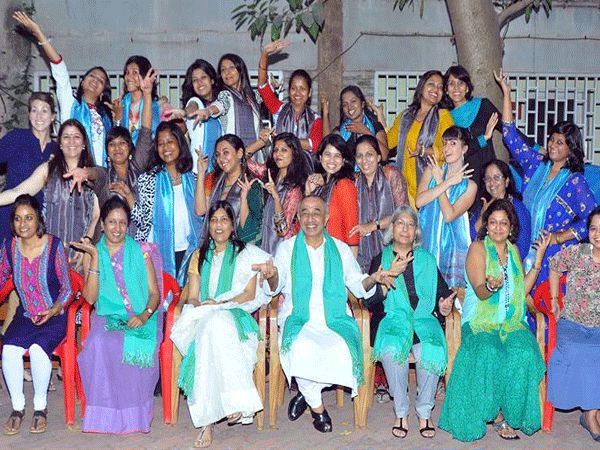
I always wondered why I’d hide away in corners, wearing baggy clothes and not meeting the leering glances of men. Being sexually abused as a child and being dark-skinned (yes, I do mention them both in the same breath), I carried a deep-seated inferiority complex about my body. It resulted in me not taking care of myself. I couldn’t bother to take an umbrella out in the sun. I’d deny myself the luxury of a pedicure. And there was always an excuse: “I had to save money” or “I had no time.”
Things came to a head when my six-year relationship with my boyfriend came to an end. When I looked back, I had done everything possible to push that poor guy away and finally succeeded! But there was no sense of elation, just an overpowering sense of guilt that felt like a familiar companion. And I started looking for a way out.
The only time I would feel really happy is when I would lock myself in a room and dance till I dropped to the floor out of sheer exhaustion. That’s when I realised that it was the only time I lost track of my body and thoughts, and was transported to a world of tremendous possibilities.
And the Universe conspired to show me the way. Last year, Tata Institute of Social Sciences (TISS) along with Kolkata Sanved was starting India’s first university-certified course in Dance Movement Therapy. For a decade, Kolkata Sanved, an NGO working primarily with children of sex workers and trafficked girls and women, had used Dance Movement Therapy (DMT) to train them to become peer educators, movement trainers and performers.
I joined the course out of a need to figure myself out. The group empathy as well as coming to resolution from within, choosing to be in the position of a leader to shape my life the way I want rather than be a victim was the breakthrough point. Now, I feel more comfortable with my body and in turn DMT has brought me closer to myself.
The two-month field internship at the red light area in Kolkata and with juvenile convicts, opened my eyes to stories of courage that gave a new definition to what being strong is. I realised people had undergone even worse experiences than me and yet they had come out as winners. It is not the circumstances that shape us but our attitude towards life that does.
Dance Movement Therapy as an instrument of change
Movement is the first language through which an infant communicates and grows, words take precedence. As adults, we forget to sing, dance, seek solace in silence or be fascinated by stories. DMT helped me revisit those.
Traditionally, dance in India has been perceived as a performing art and also a source of entertainment. But with changing times, dance has been incorporated in various fitness routines. Dance movement therapy takes it a step further and uses the body as a tool to get to the inner recesses of the mind. As a cathartic experience, movement unleashes the creative impulse and stimulates the right brain activity. The emphasis is not on choreography, but on making the individual explore his/her authentic movements, which mirror his/her inner state. This empowering experience makes dance an important tool for social change as it helps overcome social barriers of cost, literacy, age, gender and geography.
Changing one mind at a time
Now, that the first batch of Dance Movement Therapist is ready, each of us in our own way is eager to spread the joy of transformation through dance. Survivors of trafficking, juvenile convicts, cancer patients and children with learning disabilities, DMT can reach across sections of society.
Be it the will to live, a search for meaning or the ability to feel love for life, the new crop of dance movement therapists are all set to mobilise resources from that one place within, where the body and the mind are one.
More On >> Health




